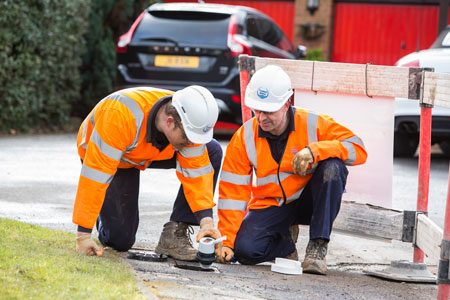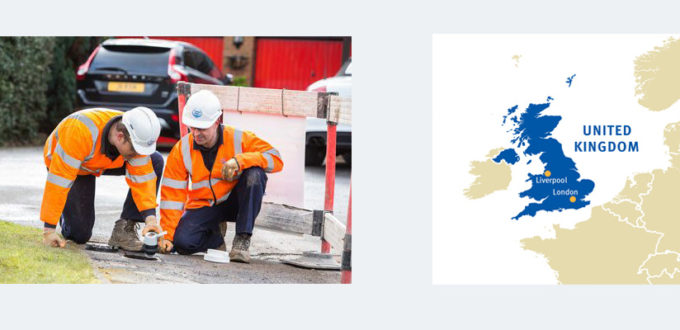Hooking up London to Smart Water Meters
Over the next 15 years the UK’s largest utility, Thames Water, aims to install around three million smart water meters, initially in a number of London suburbs. Here the metering technology manager, Martin Hall, outlines more details of the plan and the challenges that come with it.
These are exciting times for the UK’s biggest water and wastewater company. With 15 million customers, and a turnover of £1.9bn ($2.7bn) a year, the scale of Thames Water’s operation means constant challenges for its engineers and the closest scrutiny of its performance.
On a daily basis, it meets these challenges head-on, delivering an average of 2,600 million litres of water every day. But despite the popular perception of London as an area of high rainfall, it’s actually classified as seriously water-stressed.
As a consequence, the UK Government has granted water companies in the South East the power to develop a programme of progressive metering.
This has given Thames Water the chance to embark on a radical and wide-ranging project designed to address the shortfall in water supply that is predicted given London’s current rate of growth and its anticipated level of consumption. By 2020 this could amount to 133 million litres a day.
The aim is nothing less than a fundamental and innovative overhaul of household metering on a scale unlike anything seen before in the UK. Over the next 15 years, the company plans to install around three million smart water meters, initially in a number of London suburbs. These devices will enable Thames Water customers to take control over their water usage but other benefits will include:
- Improvements in billing information so that all bills are now based on the use of actual readings, instead of rateable values of property
- Giving customers a better understanding of their water use and helping them to understand ways they can manage consumption and influence the size of their bills
- Offering an opportunity for interaction, including incentive tariffs to help customers share in the benefits of water saving
- The identification of customer water supply problems such as continuous use, which could indicate wastage or leakage. Further reducing leakage, which is already down a third since 2004, continues to be an integral part of Thames Water’s business strategy and 25% of leakage comes from customers’ pipes
- Better monitoring of water in the network to properly understand where water is going for the first time and identify leaks more efficiently so they can be repaired faster
- Enhancing water network operations, through the use of sensors including pressure and temperature, to better understand how the network is performing and make improvements.
The decision to move to a smart meter solution dates back to the company’s water resources management plan of 2014 and an evaluation of the additional cost of a ‘smart’ meter system, with its new technology and back office systems to hold the data, over a conventional ‘dumb’ system. It was felt the benefits, outlined above, outweighed the extra expense.
During 2014, Thames Water examined the different options available on the market and made its decision in March 2015, opting for an end-to-end system that included new digital meters, a radio-based fixed network data capture system, data management and secure transfer to the company’s systems. Key to the choice was finding a system with a 15-year life to ensure the new digital meters would last as long as existing technology.

Nevertheless, using the new technology placed greater emphasis on getting the installation right and ensuring the contractor responsible for this part of the project installed the meters against an agreed specification and maintained a consistently high standard through each step of the process. Wherever possible, data is collected by electronic means, such as bar code, photograph and GPS, there is a rigorous audit and a proper check carried out on the supply between the meter and the property it serves.
Finally, new systems have been established to make sure that all data is stored, checked and automatically transferred to Thames Water’s corporate systems.
As part of a door-knocking campaign, customers will be given a free, personal, one-to-one consultation on the changes and opportunities, plus advice on water efficiency and access to free water-saving devices. The company will also reinforce its message to customers that they have two years, after the meter has been activated, to move on to a metered bill, unless they choose to switch early and benefit from the savings.
Aside from the predicted water savings, this ‘outreach’ part of the programme has another benefit for Thames Water, giving the company the chance to promote its customer-friendly ethos in what could be as many as 480,000 homes by 2020.
And this interaction and support after installation will be crucial to making a success of the programme as the company plans to address three key areas of possible concern:
- Impact on bills – some customers paying more while others pay less is inevitable. To help, a two-year transitional tariff will be used where the switch to a metering charge will be delayed by two years. During this period, customers will get comparison letters at three, six, 12 and 18 months, showing their current rateable bill and what the bill would be if they paid by meter. A higher ‘metered’ bill will encourage greater water efficiency; a lower bill should prompt a request to switch early
- Health – while all modern smart meters emit a radio frequency, the levels are very low, well within the regulatory limits and, based on the best evidence, they pose no health risk to customers
- Data protection – all modern water meters with electronic registers are covered by the Data Protection Act and Thames Water takes compliance with this very seriously.
With the introduction of ‘smart metering’ we’re doing what we can to future-proof the supply, while also enhancing the service we offer our customers.
Smart meters put customers in the driving seat, arming them with more information about their water use and offering them a fairer way to pay. With better water efficiency, which has a positive impact on the environment, customers can reduce the cost of their bills.


